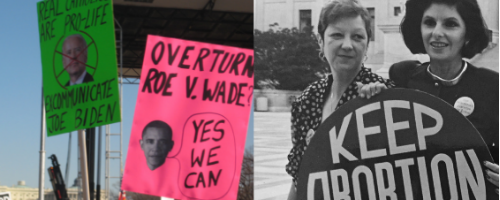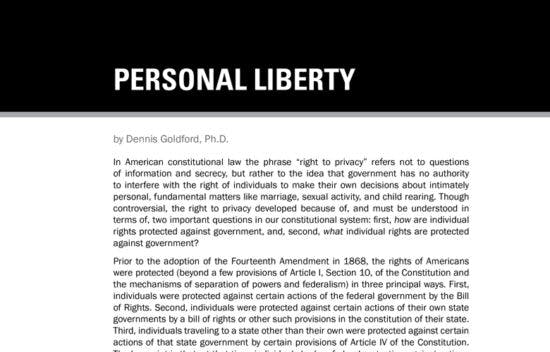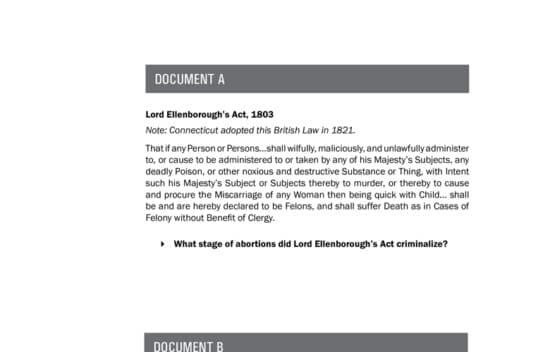



Roe v. Wade
9 items

Roe v. Wade | Homework Help from the Bill of Rights Institute
Video
Video
4 Min
Do women have a right to privacy when deciding whether to have an abortion? In 1969, a woman under the alias “Jane Roe” challenged a Texas law that outlawed abortions. The case eventually reached the Supreme Court, where Roe argued that the Constitution protects a woman’s right to privacy in having an abortion. In a 7-2 decision, the Court ruled the right to an abortion fell within the right to privacy protected by the 14th Amendment’s Due Process Clause.
Like other Supreme Court cases related to the Due Process Clause, incorporation played a part in the Roe v. Wade ruling. Incorporation suggests that states must adhere to the protections granted in the Bill of Rights.
To this day, the ruling in Roe v. Wade remains one of the most controversial Supreme Court decisions.
4 Min

Roe v. Wade (1973)
Lesson - 4 Activities
Lesson
4 Activities
Case background and primary source documents concerning the Supreme Court case of Roe v. Wade. Dealing with a citizen's Constitutional right to privacy and liberty, this lesson asks students to evaluate the Court's constitutional reasoning in Roe v. Wade.

Roe v. Wade and the Modern Abortion Debate
E Lesson
E Lesson
20 Min
In recent weeks, Alabama and Georgia have passed laws restricting abortions in their states. They join six other states that have increased restrictions on the practice so far in 2019.

Roe v. Wade Viewing Guide
E Lesson
E Lesson
20 Min
Access our Homework Help video on the Roe v. Wade Supreme Court case and use the following lesson to help your students understand the material! Overview: Do women have a right to privacy when deciding whether to have an abortion? In 1969, a woman under the alias “Jane Roe” challenged a Texas law that outlawed abortions.

Roe v. Wade (1973)
E Lesson
E Lesson
20 Min
This month, we spotlight the landmark case Roe v. Wade (1973). In this case, the Court held that the right to privacy included the abortion decision, and that states could not ban the procedure in the first trimester. One of the Court’s most controversial decisions, the ruling overturned laws banning abortion in at least thirty-one states. Resources Roe v. Wade, The Oyez Project Activity According to common law tradition carried over in the United States from England, abortion before “quickening,” (or when the fetus’s movements could be felt) was not a crime.



